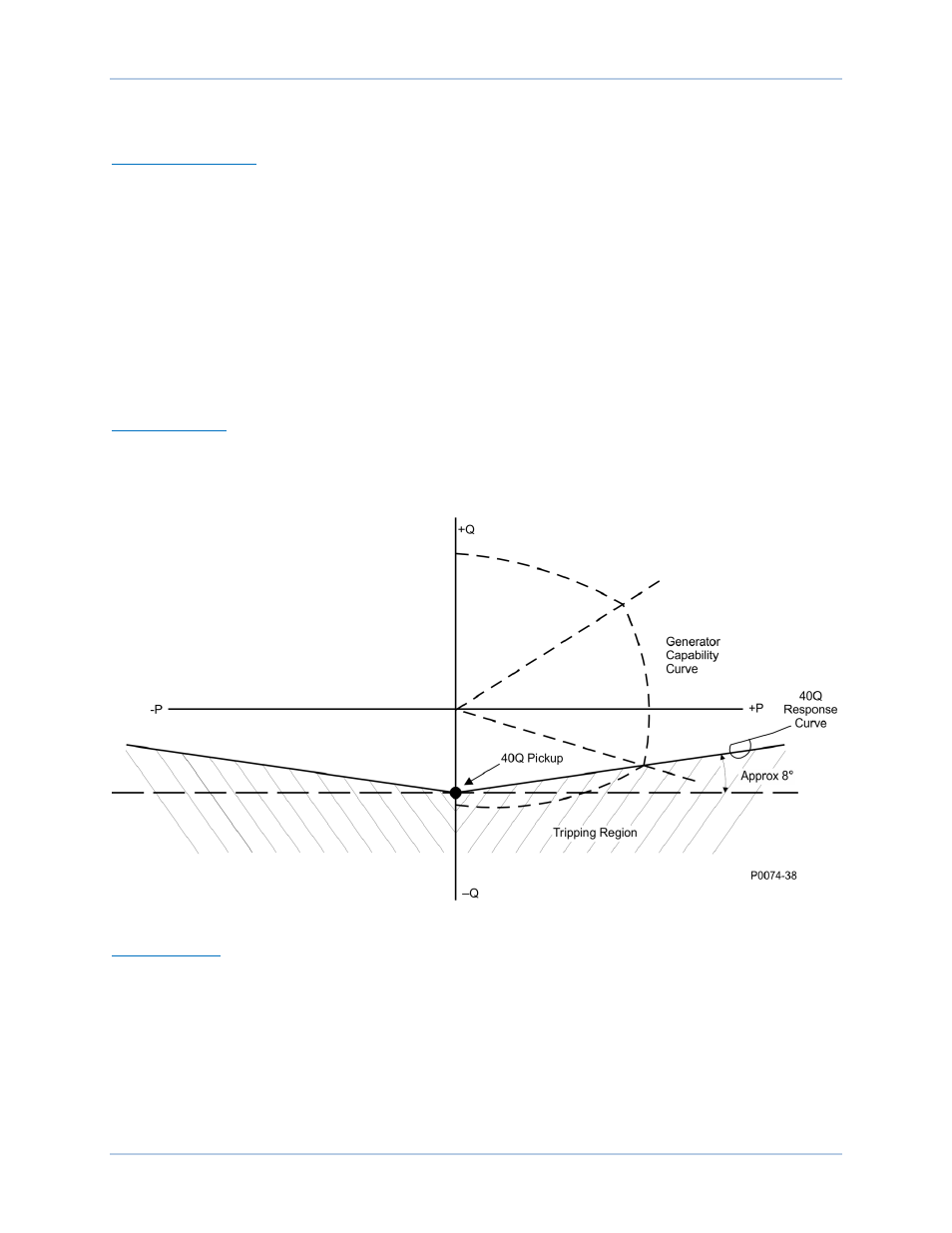Basler Electric DECS-250N User Manual
Page 63

9440500990 Rev D
47
DECS-250N
Protection
pickup response is illustrated in Figure 34. BESTCOMSPlus settings are described below and shown in
Figure 35.
Generator Protection
During loss of excitation, the generator absorbs reactive power from the power system which can
overheat the stator windings. The Loss of Excitation element acts on the principal that if a generator
begins to absorb vars outside its steady-state capability curve, it has likely lost its normal excitation
supply. The element is always calibrated to the equivalent three-phase power even if the connection is
single-phase.
The Loss of Excitation element compares the reactive power to a map of the allowed reactive power as
defined by the Pickup setting. The Loss of Excitation element remains in a pickup condition until power
flow falls below the dropout ratio of 95% of the actual pickup. A time delay is recommended for tripping.
For settings well outside the generator capability curve, adding a 0.5 second time delay helps prevent
transient fault conditions. However, recovery from power system swings after a major fault may take
several seconds. Therefore, if the unit is to pick up near the steady-state capability curve of the generator,
longer time delays are recommended. See Figure 34 for details.
Motor Protection
The DECS-250N compares the real power (kW) flowing into the motor with the reactive power (kvar)
being supplied. Operation of synchronous motors drawing reactive power from the system can result in
overheating in parts of the rotor that do not normally carry current. The 40Q pickup response is shown in
Figure 34.
Figure 34. Generator Capability Curve vs. 40Q Response
Pickup and Trip
A loss of excitation condition exists when the level of absorbed vars exceeds the loss of excitation (40Q)
threshold
A
for the duration of the 40Q time delay
B
. A time delay setting of zero (0) makes the Loss of
Excitation element instantaneous with no intentional time delay. If the pickup condition subsides before
the time delay expires, the timer and pickup are reset, no corrective action is taken, and the element is
rearmed for any other occurrences of loss of excitation.
The 40Q threshold is expressed as a percentage of the rated var flow for the machine. Loss of excitation
protection can be enabled and disabled
C
without altering the pickup and time delay settings.
BESTCOMSPlus loss of excitation settings are illustrated in Figure 35.
